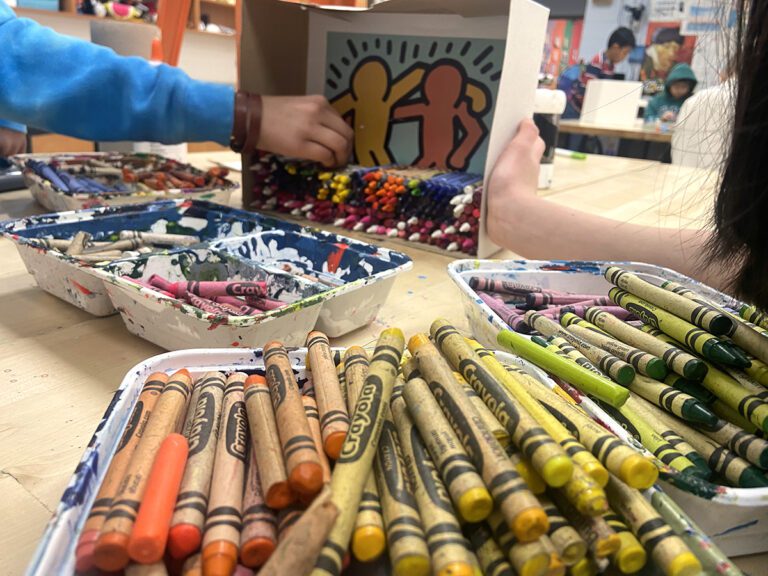I recently had the opportunity to experiment with Createx Monotype colors and Blick’s Watersoluble Block Printing Ink. I love printmaking, but as a newer teacher, I find printmaking with the WHOLE class at the elementary level a little intimidating. After working with these products and making prints with my after-school art club, I have a renewed sense of inspiration and excitement about printing with my classes and grade levels! I can’t wait to introduce monoprints, and create lino pieces with my fourth grade movement unit, tessellations with fifth grade, and rotating radial designs with sixth grade!
Take a peek at the process I went through to create monoprints in the video below.
Createx Monotype Printing from Alecia Eggers on Vimeo.
The monotype printing was an absolute hit! The transfer process is so magical and mesmerizing to students! We simply used the Createx Monotype colors to paint on plexiglass/plastic pieces with paintbrushes, let it dry, and then pressed damp paper on top of the image to achieve our print.

Some helpful hints for monotype printing with Createx Monotype colors:
- apply the paint in thin layers – it dries much faster
- write words backwards (we found this out with the Under Armor print)
- paint your image on the plexiglass as you would if you were going to hang it right up, there’s no need to “build it up” backwards…if you cover spots of ink, they won’t show up on your transfer print
- mist paper with spray bottles and let it soak for a few minutes, dab puddles with a paper towel
- you may have to experiment with different absorbent papers until you find one that holds your monoprint to your liking
- pressing the paper to the plexiglass with partners makes it more fun!
- lift a corner to see how the image is transferring, press more or lift depending on your liking
- the lighter colors seemed to transfer easiest
When done printing, clean up was simple and painless. The Createx colors simply washed off the plexiglass using a sponge, and it was ready for the next round of images. I did find there was a little ghost image of what had been painted left on the plexiglass (I don’t know the age of the ones I used, so that could have something to do with it), but it didn’t effect any new images that were painted on for the next set of prints.

To experiment with Blick’s Watersoluble Block Printing Ink, I used some different rubber and lino pieces, and did an experimental tessellation print. I would imagine this ink would work well on a variety of printing materials. I really loved how the colors easily blended, and when rolling the proper amount of ink in thin layers with a brayer, my print stayed true to the lines I had carved, and the colors I intended. This ink is perfect for printing with the elementary level as the colors are rich, a little goes a long way, it’s quite affordable, and it is easily cleaned and rinsed! I did experience a little bit of tackiness during one experimental session, but it wasn’t anything a good mist of water couldn’t fix!
What is your favorite printing ink to use? Why?
Any unique applications to share for some of the basic supplies you already have?
Magazine articles and podcasts are opinions of professional education contributors and do not necessarily represent the position of the Art of Education University (AOEU) or its academic offerings. Contributors use terms in the way they are most often talked about in the scope of their educational experiences.





